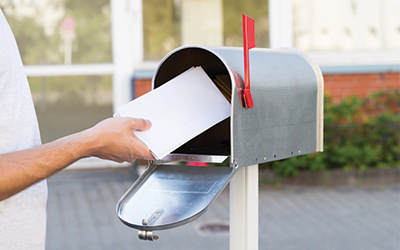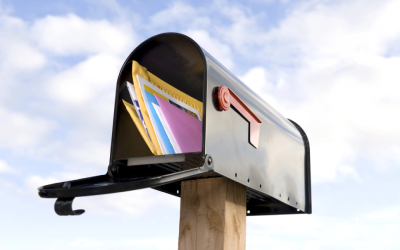Green direct marketing is not limited to offers of eco-friendly products and services. A direct response audience may support issues of sustainability and the environment. If this is known to be true, it becomes incumbent on marketers to demonstrate sensitivity to the issues their prospects and customers share.
Green Direct Marketing Is As Green Direct Marketing Does
A company that has achieved green certification, or is a member of a green organization, must make it known. Logos and badges that proclaim such distinction should appear in all communications.
Recipients must know what is being done to create and send eco-friendly mail pieces. From recycled paper to non-toxic ink to low emission processes, backing up words with actions creates credibility. A well integrated omni-channel campaign can be green, while preserving the known advantages of physical pieces. (Note: There is evidence that a good number of reliably eco-friendly buyers continue to receive and order from printed catalogs. Does this list exist? Yes it does.)
The Medium Sends A Message
Mailers may even offer choices of how to receive information and offers, including email, SMS, phone, and digital display. Assure those who may not want physical mail that any coupons or vouchers will have digital equivalents, so they will never miss out on offers. This can even be offered in a printed piece by simply providing a QR code that opens a web page of preferences. Or a text response mechanism, “To receive email alerts only, text 2 to 000-0000”, and so on. Each of these can be personalized.
Even in the absence of postal direct mail, the remaining electronic channels, alone or in concert, can produce solid results. The good will this approach generates can mean the difference between an ongoing relationship and a lost customer.
Green Data Hygiene
It is generally accepted that most of the success of a direct mail campaign is determined by the list. Sharpen and update all house lists. When buying lists, ask tough questions about freshness and accuracy. More is not always better. Mailing fewer pieces yields a smaller carbon footprint. At the same time, better-focused mailings mean improved ROI while reducing waste.
- Create marketing personas to ensure that well-defined prospects are targeted.
- Hone all house lists. Use Recency/Frequency/Monetary analysis to model for customer value. Remember the old 80/20 rule.
- Explore software tools that facilitate exploring empty/abandoned cart data. Reel in the prospects that seemingly got away, the simple fact that they began the process places them in the funnel.
- Provide easy ways for opting in or opting out. Provide preferences for HOW info and offers are received if people opt in.
- Send direct mail to deliverable addresses – one to a customer! Use tools (or be sure any list provider does) like NCOA and de-duplication. Ask how recently a list has been updated.
Many of these ideas and more are laid out in the DMA’s Green 15 framework. From all aspects of production to list management and waste management, it describes best practices that put the DMA membership and the direct maul marketing industry in sync with the common sense needs of businesses and consumers.




